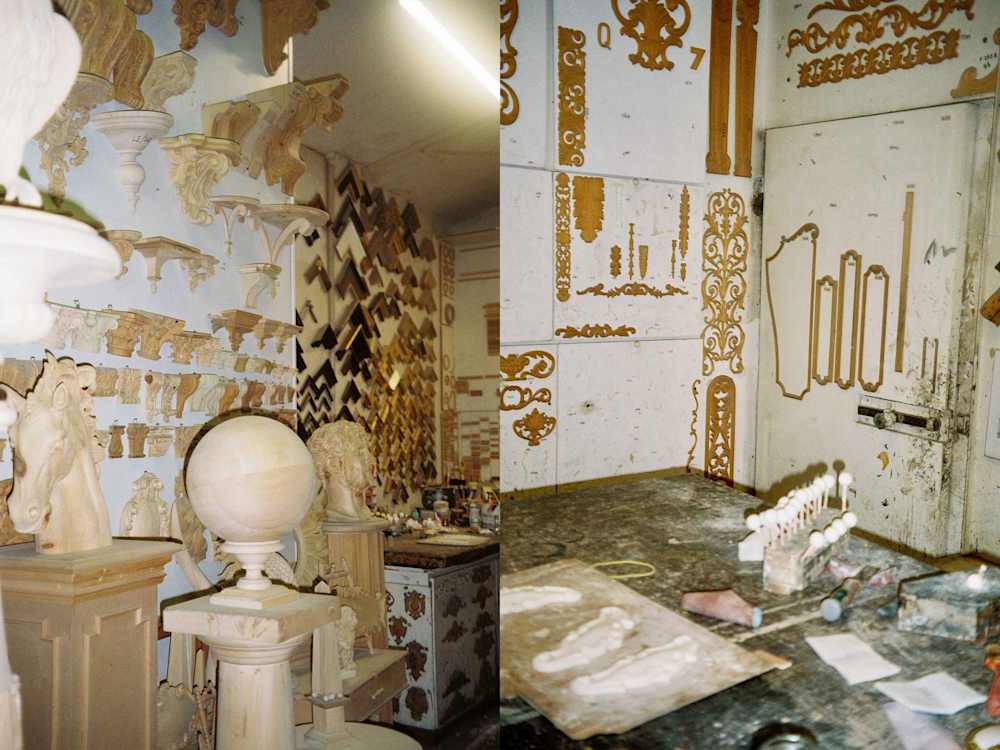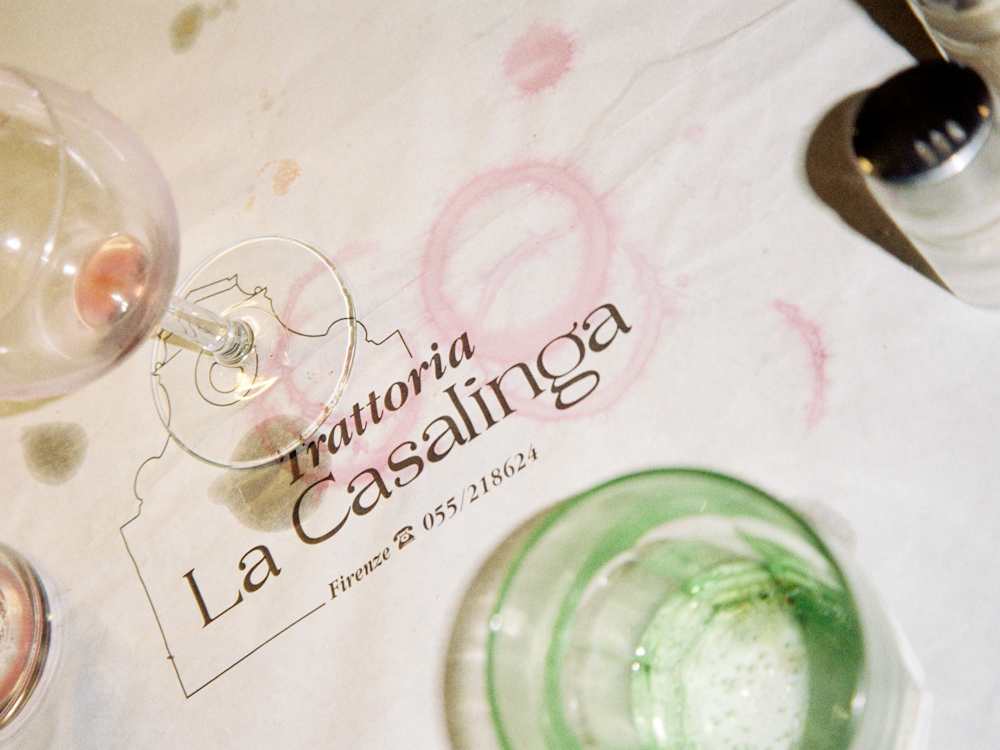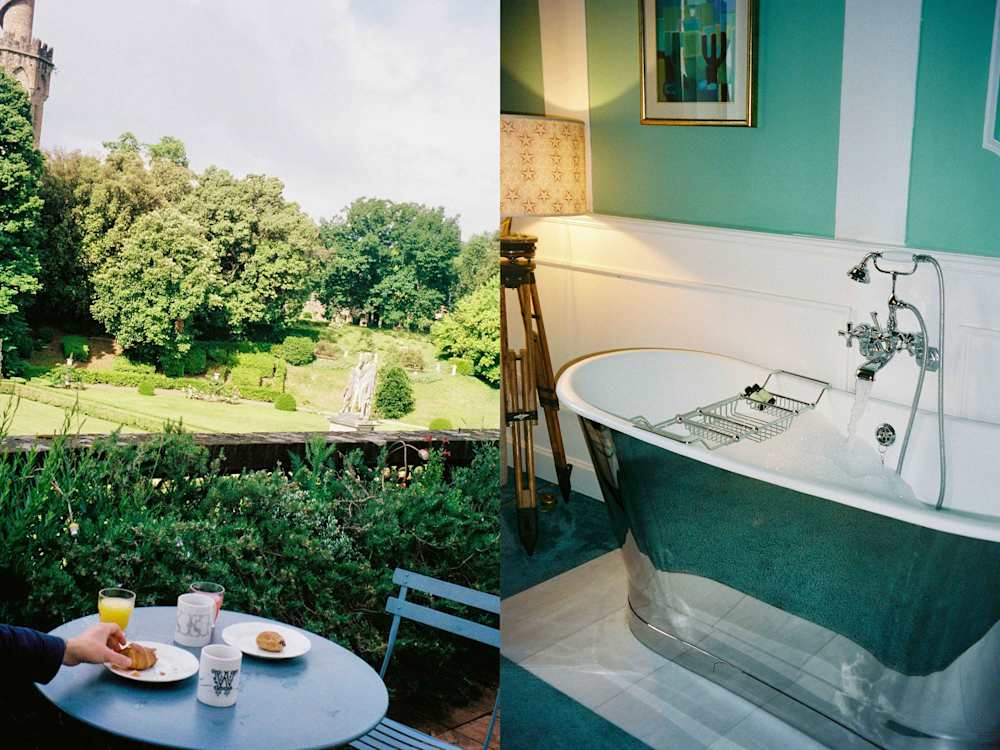Florence is hardly a hidden gem; in fact, its look-at-me beauty is so openly dazzling, you might feel like you’ve seen it all before you even get there. But for a more authentic weekend break, one need only cross the Ponte Vecchio to discover a whole new side to the Renaissance city, one usually reserved for locals and those in-the-know.
Oltrarno, which literally means ‘beyond the Arno’ is the creative heart of the city. Its artisanal legacy can be traced back to the 15th century, when the Medici family, not content with just one palace, moved to Palazzo Pitti. Their relocation drew a constellation of master craftsmen — from bookbinders and painters to metalworkers and glassblowers — who all set up shop on the city’s southside.
Today, you’ll find their legacy well and truly alive, in back-street ateliers and paint-splattered workshops where modern-day Florence continues to flex its creative muscles. Our insider’s guide to Oltrarno will help you navigate the city’s coolest ‘hood like a native… catch you on the other side.
WHERE TO GET BREAKFAST
Unlike every other meal of the day, Italian breakfasts are usually short and sweet; think caffè al banco and a cornetto to go. In Florence, however, you can swap the latter for a local specialty; the budio di riso, a kind of rice-pudding cupcake. You’ll find this served in most pasticcerie, including the historic Pasticceria Gualtieri, a family-run bakery where cream-filled cakes and flakey pastries make a perfect morning treat. Otherwise, old-school Pasticceria Buonamici is known for its biscotti alle mandorle. If you’re in no rush, La Citè is an offbeat cafe-cum-library where you can easily spend a couple of hours flipping through Italian novels over cake and cappuccinos.
STYLE AND SHOPPING

Castorina 1895
You’ll be hard-pressed to find any chain stores in Oltrarno. The area’s legacy of craftsmanship is keenly felt in the wealth of ateliers and independent boutiques that line its cobbled streets, each peddling one-of-a-kind and custom-made treasures. Lovers of antiques should head to Via Maggio, where you’ll find everything from 16th-century armour and ancient ceramics to prized mid-century finds like Gio Ponti armchairs and Enzo Mari sculptures. Gallori Turchi has an impressive collection of the former, and the latter can be found in abundance at Pianod. One of my personal favorites in the area is Maurizio Salici on Via Santo Spirito — a cabinet of curiosities full of wooden puppets, sacred-heart icons, and so much more.
You’re sure to find fittingly antique outfits at Recollection by Albrici, a cavernous space — more of a museum than a shop — awash with pearls, sequins, silks and feathers. Here you’ll find a mix of modern and vintage: think 1980s Fendi tea-dresses, 19th-century velvet jackets, hand-embroided kimonos and 1940s winter coats. For more stellar vintage finds, visit C’est Chic on Via Maggio or Celeste Vintage in Piazza San Felice, where, like me, you may find yourself needing to be physically removed from a lime green, snakeskin Prada tote. As for footwear, Heart to Heart sells classic velvet slippers (and lovely linens); while cobbler-to-the-stars Stefano Bemer (now overseen by Tommaso Melani) has a studio in a deconsecrated chapel over in eastern Oltrarno.
To see the area’s craftsmen at work, pay a visit to Il Bronzetto, where furniture and accessories are hand-crafted in brass or bronze. Alternatively, Castorina 1895, is a wood workshop where you’ll find artisans chiselling decorative cherubs, ornate frames and cornices. And don’t miss the flea market in Piazza Santo Spirito, which takes place on the second Sunday of the month.
ARTS AND CULTURE
You can’t miss the grandeur of the Pitti Palace, the former residence of the powerful Medici family, now a sprawling museum complex that practically demands at least a day to get around it. Its regal splendour spills into the magnificent Boboli Gardens, a sprawling green masterpiece perfect for a leisurely (if lengthy) stroll among sculptures, fountains and grottoes.
For a dose of art history, pop into the Brancacci Chapel in the Church of Santa Maria del Carmine. Here, you’ll find the seminal, recently-restored, 15th-century frescoes by Masaccio and Masolino da Panicale –– a real masterclass in Renaissance painting. Of course, no art history tour of Oltrarno would be complete without a visit to Basilica di Santo Spirito, the last church to be designed by Filippo Brunelleschi, the OG of Renaissance architecture. Don’t be deceived by its flat, almost austere exterior — inside, Brunelleschi’s signature blend of mathematical precision and harmonious proportions work together to masterfully direct the light beneath its magnificent, soaring dome. As a teenager, the young Michelangelo made a crucifix for the Basilica — one of his very first works — which can still be seen today, albeit at a distance.
While you’ve got your glasses on, Piazzale Michelangelo draws a crowd for its famous city-gazing terrace, but for those willing to put in a little extra legwork, make your way further up to San Miniato al Monte. Built between the 11th and 13th centuries, this Romanesque church perches on one of the highest points in the city, offering what is arguably the most breathtaking, unobstructed view of Florence below.
Another spot with stellar views is Villa Bardini, a palace turned cultural centre that hosts art exhibitions and events. Its fairy-tale garden has a fruit orchard, sculpture trail and a — frankly excessive — amount of fountains; but then, Florentines aren’t exactly known for their restraint, just look at the Duomo. For contemporary-art enthusiasts, the 16th-century hilltop fortress, Forte di Belvedere, hosts some of the city’s best exhibitions each summer, and Galleria Alessandro Bagnai is a blink-and-you’ll-miss-it space dedicated to emerging international artists.
WHERE TO EAT

Trattoria la Casalinga
If there’s one dish Florence owns, it’s steak — hell, it’s even put its name to it. You can find the city’s perfectly-pink signature dish, bistecca alla Fiorentina, cooked to perfection at Trattoria Sostanza, a casual, loved-by-locals spot which has barely changed its menu since it first opened its doors in 1869. Steak’s not the only meaty dish Florentines are fond of though — admittedly more acquired tastes, tripe and offal are specialities, which are served throughout the city at chioschi, or street-food stalls. If you can stomach it (pun intended), grab a lampredotto panino at Trippaio Albergucci Mario, in Porta Romana square.
Beyond traditional meaty dishes, Florence has quietly cultivated a thriving plant-based dining scene. 5 e Cinque is an intimate spot with a Lingurian-inspired menu elsewhere, Alla Vecchia Bettola is renowned for its penne ‘alla Bettola’, a famous house dish of creamy tomato penne cooked with vodka, which has been on the menu since the 1970s (sorry Gigi Hadid, these guys got there first). And Trattoria la Casalinga cooks up hearty Tuscan fare like ribollita, a chunky, white-bean soup or peposo dell’Impruneta, a traditional stew with beef ribs and pepper.
WHERE TO DRINK
Il Santino is a lesson in never judging a book by its cover. While this intimate little wine bar doesn’t look like much from the outside, inside locals crowd the bar, chatting over glasses of pet-nat and Chianti Classico — many from small-batch producers — and traditional Tuscan crostini. Grab a seat out on the sidewalk for a people-watching pick-me-up. Fans of natural wines should make a beeline for Enoteca Spontanea, where Sardegnian siblings Nicola and Irene elevate the tasting experience with their boundless knowledge of biodynamic and low-intervention vino. Le Volpi e l’uva, meanwhile, caters to more classically tuned tastebuds, with a constantly changing menu of all-Italian wines.
If grapes aren’t your thing, Archea Brewery is an independent pub specialising in Italian craft beers. For cocktails, the speakeasy-style parlour Rasputin is hidden behind Piazza Santo Spirito and may take some detective work to reach, but if you like a barrel-aged Negroni as much as we do, it’s well worth the effort. Piazza Santo Spirito happens to be the beating heart of Oltrarno, where you’ll find young and old gathered each evening for aperitivo. Grab a Campari spritz from Pitta M’ingolli and join them— who knows — you may well find yourself rubbing shoulders (or thighs) with Paul Mescal and his barely there shorts at the next Gucci Cruise show.
For a glimpse of Oltrarno at its most vibrant, head to Caffe’ degli Artigiani, a no-frills corner bar spilling out into Piazza della Passera. The square itself is one of the city’s smallest, but it’s also one of the most characterful. It’s said the piazza takes its name from an ancient brothel that once occupied the space, but today you’ll find a lively community square, festooned with lights, where locals gather for more wholesome fun.
WHERE TO STAY

AdAstra
Calligrapher Betty Soldi and her partner, the designer Matteo Perduca, are the stylish couple behind some of Oltrarno’s most interesting stays. These native Florentines created a group of hotels from a desire to introduce more boutique offerings to the city. The result is a trio of funky, design-led stays, each brimming with personality and bric-a-brac charm.
Nestled within a 16th-century palazzo on Via Maggio, their first venture, SoprArno Suites has just 13 colour-splashed rooms, each with a curated scattering of shabby-chic furniture. Meanwhile, Oltrarno Splendid (set in a slightly newer, 18th-century home on Via dei Serragli) displays a similarly keen eye for detail, blending retouched frescoes, centuries-old wallpaper and flea-market finds together, creating a light-hearted counterbalance to the building’s weighty past.
Then there’s AdAstra, whose name is Latin for ‘to the stars’; having hailed from a family of firework makers, Betty knows a thing or two about aiming high. Here, mid-century Italian furniture, parquet floors and grand fireplaces sit below lofty, fresco-adorned ceilings — hardly surprising given the downstairs neighbour is the Marchese himself. But the jewel in AdAstra’s star-studded crown is the terrace, which looks over the incredibly romantic Torrigiani Gardens, Europe’s largest private walled garden.
Equally romantic are the views from Hotel Lungarno’s Arno-facing rooms and suites. While waking up within eyeshot of 1,000 years of history is already a luxury, the experience is elevated by the hotel’s high-spec interiors (the hotel is owned by the fashionable Ferragamo family, after all), Michelin-starred restaurant and incredible art collection. There aren’t many places in the world where you can sip a Negroni (one worth writing home about) while nestled between a Picasso and the Ponte Vecchio.
Book your stay in Oltrarno, see our full collection of hotels in Florence or check out our other neighbourhood guides — how does Rome sound?



